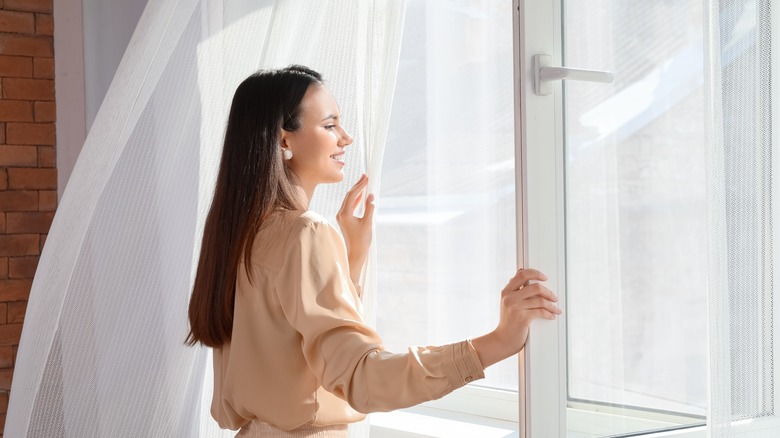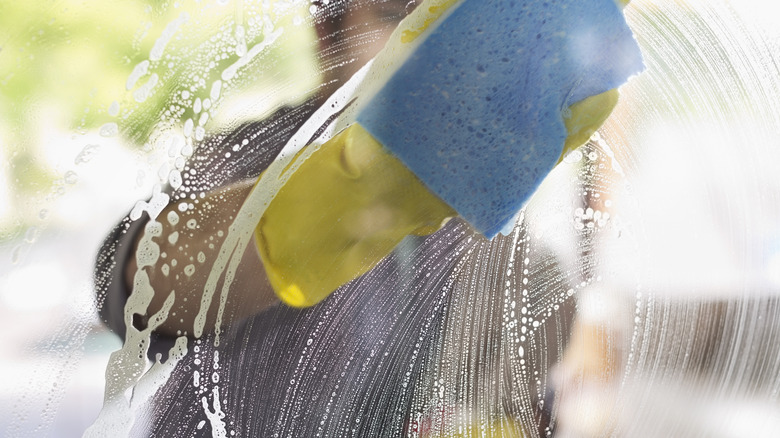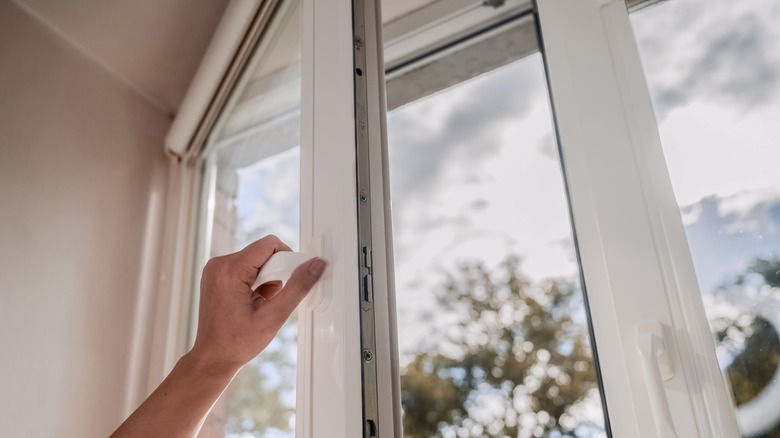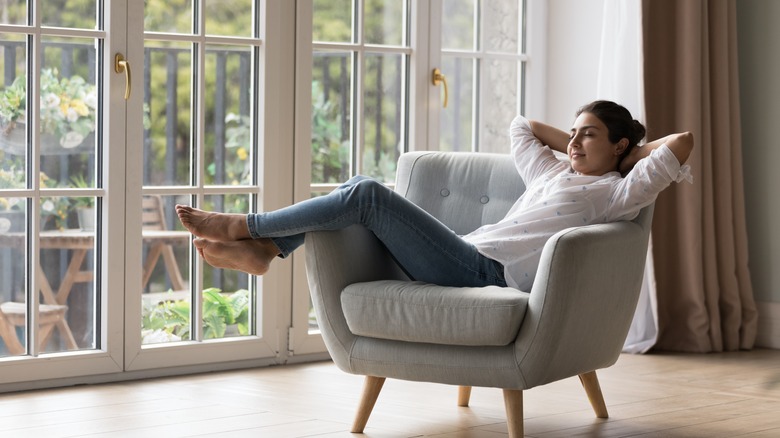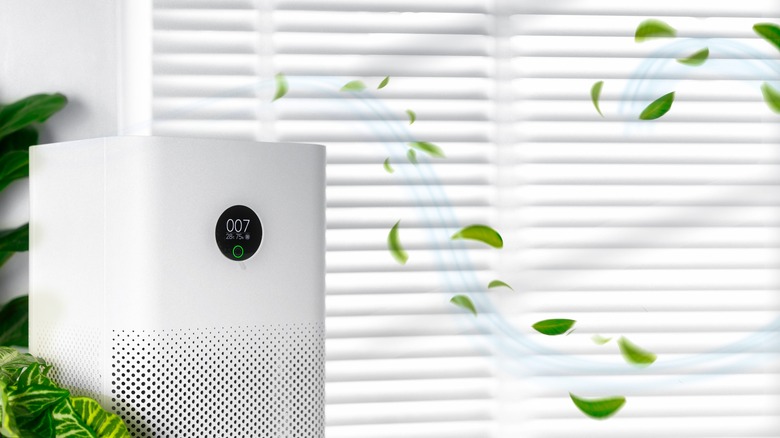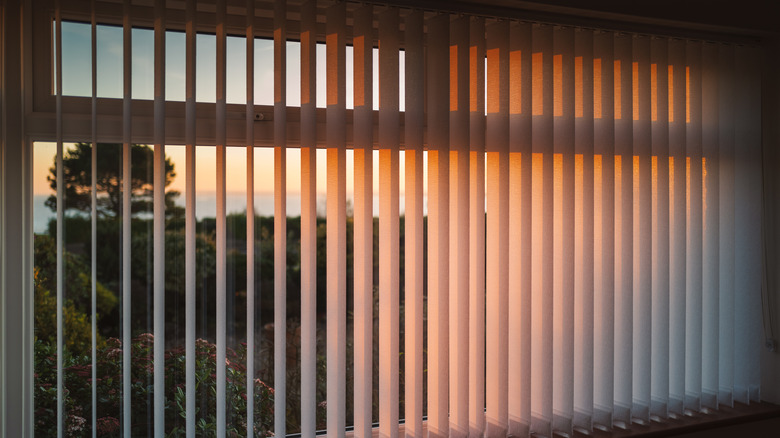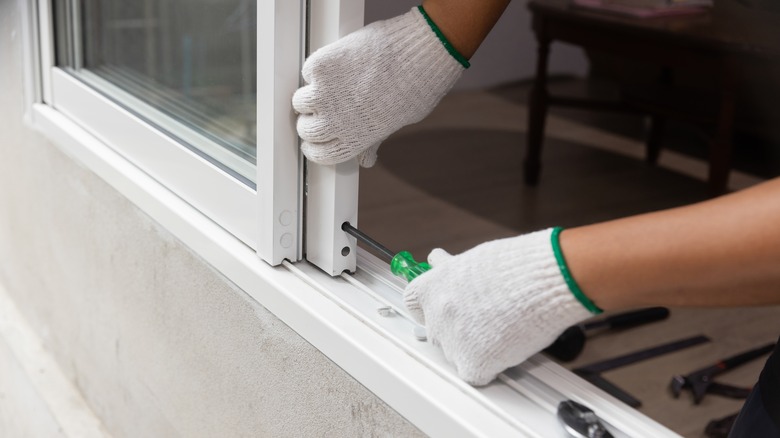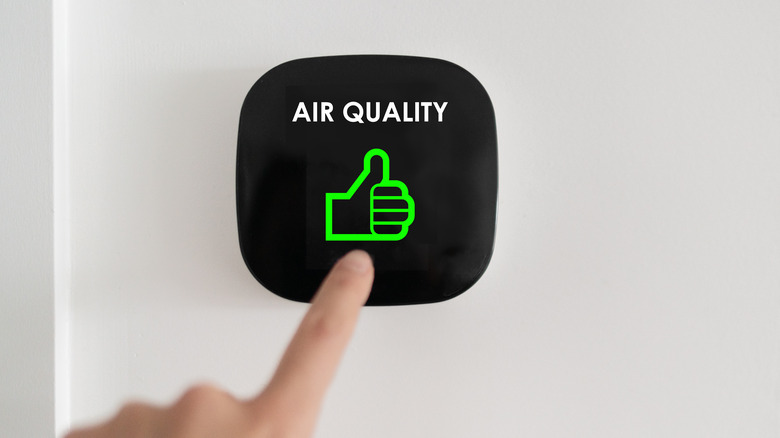8 Ways To Allergen-Proof Your Windows
According to the Asthma and Allergy Foundation of America, 81 million people in the United States suffer from seasonal allergies. This breaks down to equal about 26% of all adults and approximately 19% of all children in the country. Seasonal allergies, which are caused by allergies to grasses, weeds, and trees, are most common in the spring when pollen counts are higher. Despite the fact that seasonal allergies are triggered by elements outside of the home, pollen from trees, grasses, and weeds can still enter the home, causing more irritation for family members suffering from allergies.
One way pollen can enter the home is through the windows. If you haven't already taken steps to allergen-proof your windows, now is the time to act. Below, you'll find a list of small changes you can make to reduce the allergens that enter your home, allowing everyone inside to breathe a sigh of relief the next time allergy season rolls around.
Keep your windows and screens clean
Keeping your windows and screens clean is the first line of defense to protect you and the other members of your home against allergens. Over time, pollen and dust can accumulate on the window, sill, and screen. Once these allergens have accumulated on the surfaces, they're in your home and posing a risk. If not cleaned off, they can spread through the home when the windows are open, fans are running, or someone walks by and disturbs them.
By regularly cleaning your windows and screens, you're removing these allergens before they have a chance to cause problems. To clean screens and windows, you can use a store-bought cleaning solution or make your own using warm water mixed with a mild detergent. Wipe the surfaces clean using a microfiber cloth dipped in the cleaning solution. Depending on how many layers of pollen and other gunk there are on the window, you may need to use a few cloths to avoid spreading more allergens around. Then, dry the window panes with a clean microfiber cloth to achieve a streak-free finish.
Seal cracks around the window
If there are any cracks — even very small ones — around your window, you'll want to seal them with some caulk. Not only can cracks around a window cause drafts and waste energy, but they can also provide an entry point for allergens. The wind can blow pollen from grasses, weeds, and trees into these tiny entry points. From there, the pollen will be in your home, and can irritate the allergies of the people in the house. Beyond letting pollen in, cracks around a window can also trap moisture from snow or rain, creating a breeding ground for mold. Mold can cause allergies, respiratory symptoms, and other serious problems, so it is certainly not something you want to allow to grow in your home.
To seal these cracks, you'll need some caulk and a caulking gun. Keep the caulk gun in a stable and consistent position and press the trigger to release a line of caulk along any cracks. You can use a putty knife and a little more caulk if you were not able to fully cover any of the cracks you found. Assessing the weatherstripping along the window, and replacing it if necessary, can also help you keep allergens from entering your home.
Be strategic about which windows you open and when you open them
As the weather finally starts to get warmer in the spring after a cold winter, it can be so tempting to open up the windows, air out the house, and enjoy the fresh air. However, if you or anyone else in your home suffers from allergies, this isn't always the best course of action. Opening the windows will give pollen and other allergens the opportunity to enter your home.
At the same time, though, keeping every window closed all the time also isn't the best choice. According to the Environmental Protection Agency, letting fresh air from outside into a home can improve the indoor air quality. So, what are you supposed to do with these two conflicting pieces of advice? Be purposeful about when you open the windows. If it is a very blustery day when the wind is more likely to blow lots of pollen into the house, plan to leave them shut that day, and open them the next. Similarly, if someone in your home suffers from allergies, consider leaving the windows in their bedroom closed, at least overnight, so they can sleep more comfortably.
Know when to leave all of your windows closed
There will be some days (or even multiple days in a row) when it is best to just leave your windows closed. Just as you check the weather forecast to decide what to wear, you should pay attention to the pollen forecasts and pollen count to help you determine whether you can open your windows or if it would be better to leave them shut.
The pollen count measures how much pollen from different allergens is present in the air and whether the concentration is high or low. Pollen forecasts work similarly, predicting what the pollen count will be over the next several days. A scale of 0 to 12 is used to report the pollen levels in the air. 0 represents the lowest levels of pollen, while 12 represents the highest levels. Anything above 9.7 is considered high, while between 4.9 and 9.6 would be considered medium to medium high. If you or others in your home are dealing with allergies, it would probably be in your best interest to avoid opening your windows when the pollen count is in the medium or high range. This will limit the allergens that enter your home, and allow your home to act as more of a refuge from the allergen-inducing outdoor conditions.
Run an air purifiers after having the windows open
Running an air purifier during allergy season, particularly after you've had the windows open, can help remove allergens from the air. Be sure to choose an air purifier with a HEPA filter, as these models will be the most effective at getting rid of contaminants. HEPA filters, or high-efficiency particulate air filters, are able to trap microscopic allergen-inducing contaminants, including pollen, dust mites, and pet dander, in their very fine mesh designs. After these contaminants are trapped by the filter, the air purifier cycles clean air back into the living space.
While air purifiers will be the most effective when the windows are closed and new contaminants aren't being introduced into the air, they can still help improve indoor air quality when the windows are open. If you want to enjoy some fresh air, running your air purifier when the windows are open or once you close them can at least help limit allergens in the room.
Choose window treatments that are easy to keep clean
Any allergens that make it through your open window may also attach themselves to your curtains, blinds, or shades. Just as you want to make sure that you are regularly cleaning the windows themselves to get rid of pollen and other allergens, you will also want to regularly clean the window treatments as well. For this reason, you should opt for coverings that are easy to keep clean and free of contaminants.
There are several different types of window treatments. Some can be a great option for those suffering from allergies, while others may not be the best choice. Blinds and shutters with wide slats are one good option to consider. It's easy to clean blinds by wiping or vacuuming. Vertical blinds are another excellent option for those dealing with allergies. Because the slats go up and down, rather than across, there aren't flat surfaces where dust and pollen can collect.
If you prefer a fabric window covering, consider purchasing some solar or roller shades. When these window coverings are opened, the shade itself is concealed in a cassette that also protects it from getting covered with dust and other contaminants. While dust and pollen can collect on the surface when the shades are pulled down, because they are flat, they will be easier to clean than other types of shades. Vinyl and plastic blinds, mini blinds, cellular blinds, and dry-clean-only window coverings should be avoided when possible when you're looking to allergen-proof your windows.
Invest in window screen pollen filters
If you're looking for an alternative to leaving your windows shut for the entire allergy season, you can consider purchasing window screen pollen filters. Traditional mesh screens have lots of small holes. These holes are small enough to keep bugs out of the home, but they are not small enough to stop pollen from entering. Special pollen filter screens seek to make up for the limitations of traditional mesh screens. Their design is able to filter out pollen and other allergens, preventing them from getting into a home. However, the screens will still allow the fresh outside air in, allowing you to enjoy the best of both worlds.
There are different types of pollen filters on the market. You'll want to look closely at the design of each model to make sure that it will work with your existing window. You may also want to read through a few reviews from customers who have used the specific products you're looking for. This can help you make sure that the screens are easy to use and are effective at reducing allergens.
Have a whole-home air purifier installed
Cleaning your windows, keeping the windows closed as much as possible, and running small room air purifiers can go a long way towards reducing pollen, dust, and pet dander, but it may not be enough to offer sufficient symptom relief for those dealing with allergies. To remove more allergens and improve the air quality throughout the entire home, consider having a whole-home air purifier installed. Like room air purifiers, these models take the contaminated air from a home, trap the pollen, dust, dander, and other pollutants, and send back out clean, purified air. However, unlike individual room air purifiers, they're able to accomplish this task for the entire home. This leaves the air in all the rooms cleaner and less contaminated, and removes the need to move a small air purifier from one room to the next based on where you'll be.
A whole-home air purifier works with the HVAC system. As the air goes through the return valves back to the HVAC unit, it first passes through the air purifier. After the contaminants are trapped in the purifier, it will cycle through the rest of the system to get heated or cooled, before being released back through the vents in the home.
